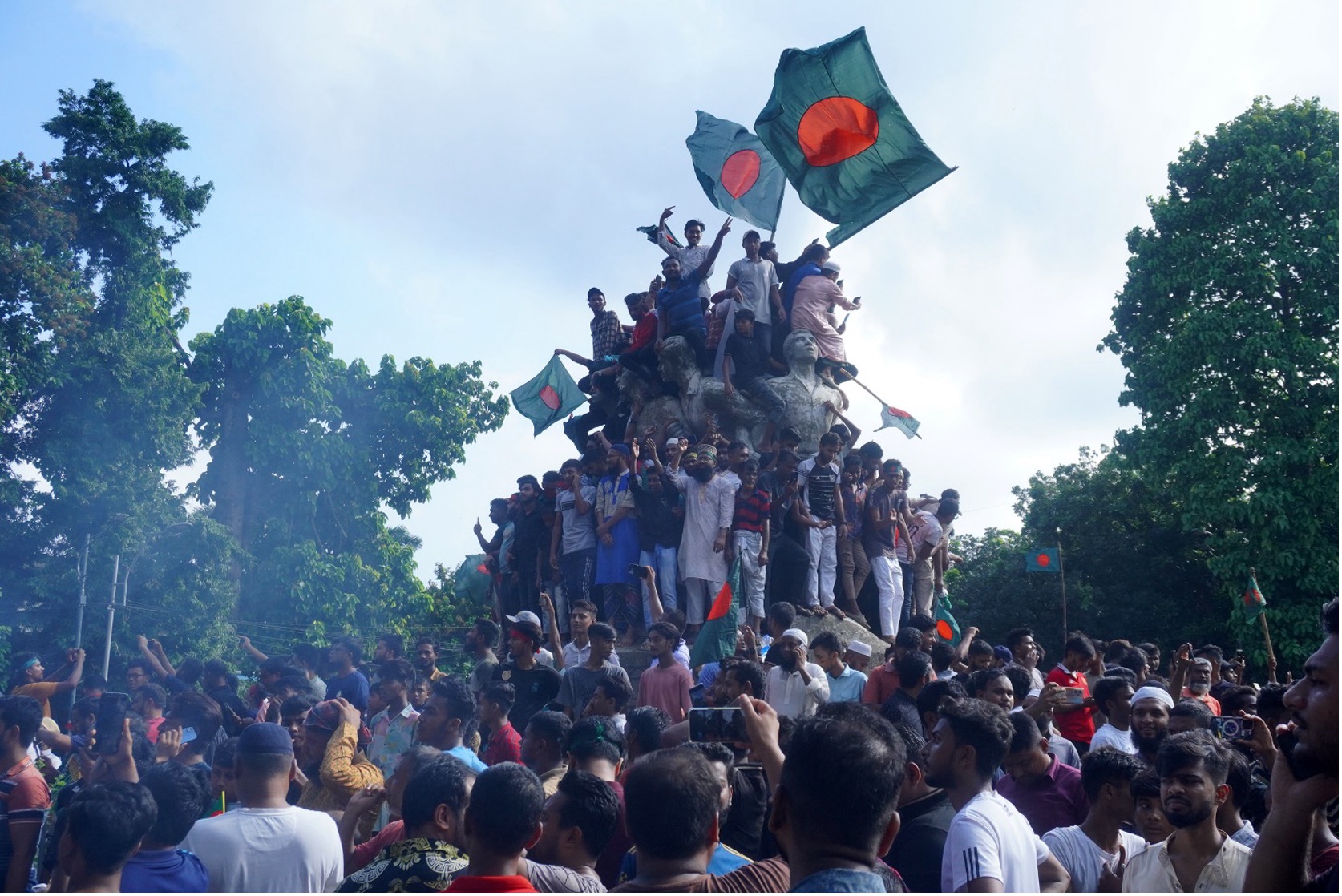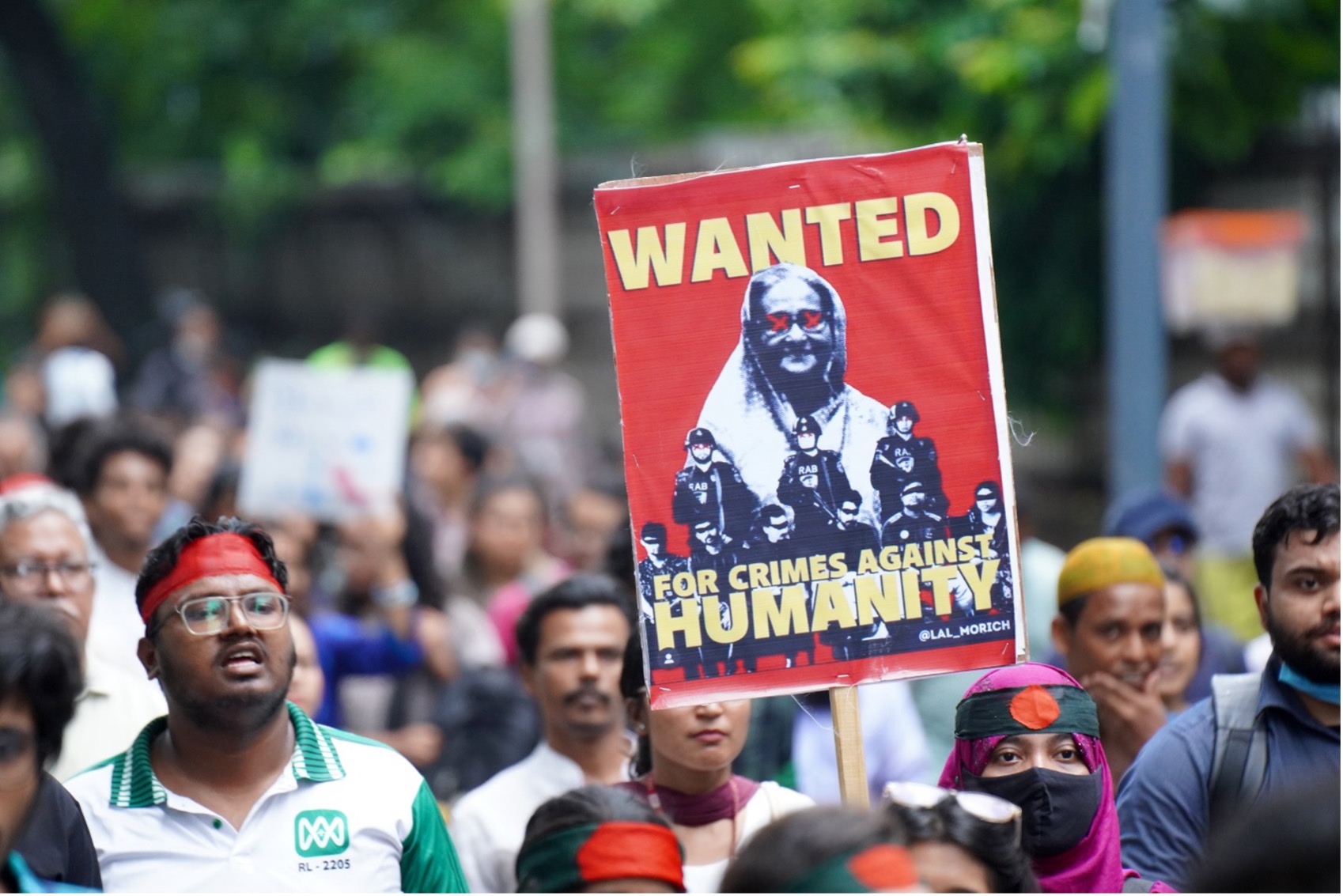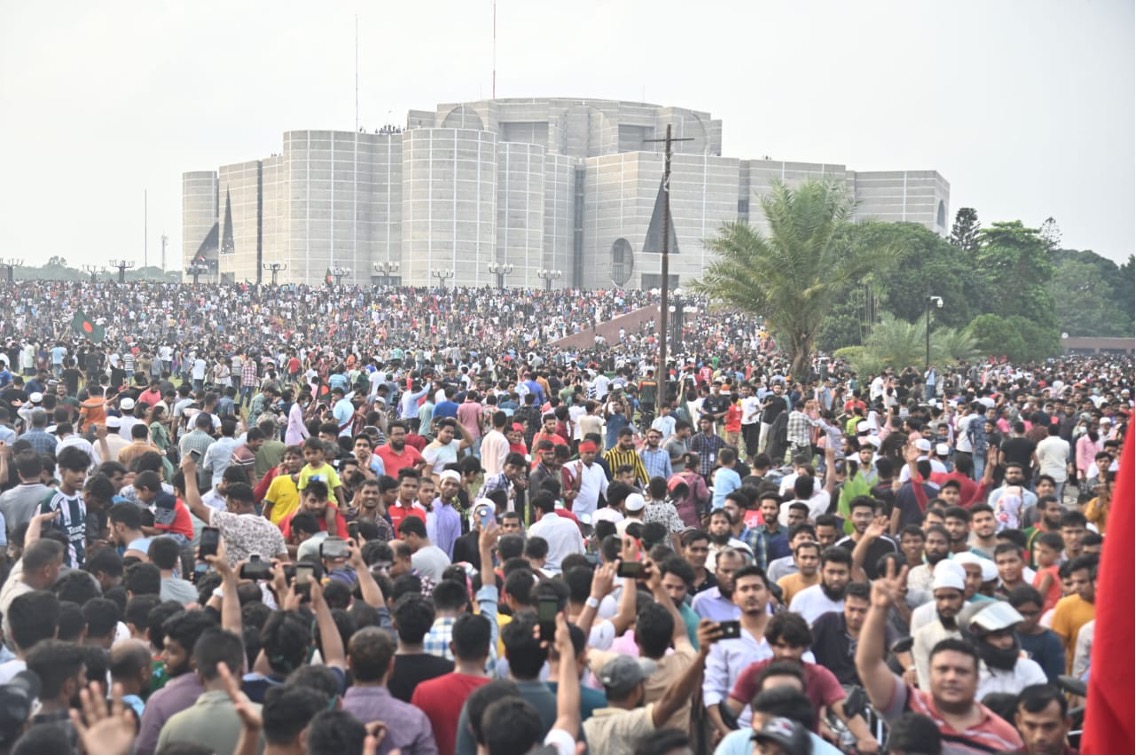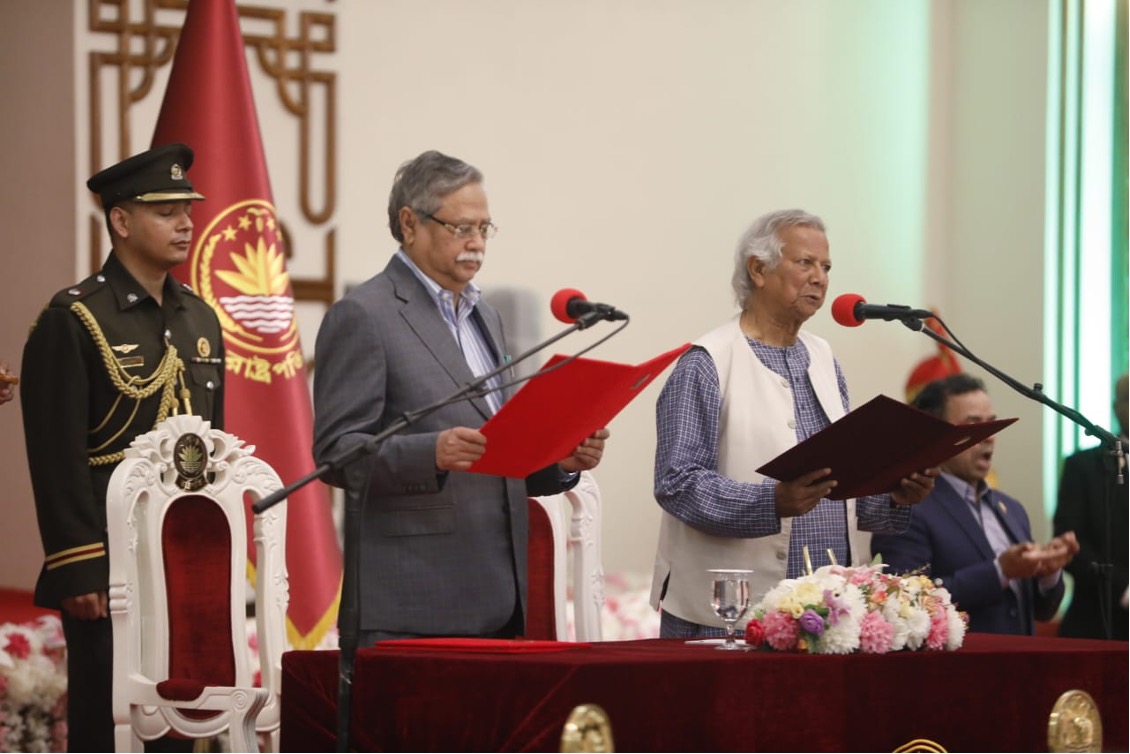
Bangladesh stands at a crossroads, experiencing what many call a “second liberation” after the ignominious exit of Sheikh Hasina, its long-serving ruler. Hasina’s 16-year authoritarian streak ended abruptly in August 2024 after a month of student-led protests triggered by a non-partisan resistance against quota reforms for government jobs. These protests have now led to the formation of an interim government headed by Nobel Laureate Dr. Muhammad Yunus. This new administration faces the challenge of guiding Bangladesh towards better governance and participatory elections, although no election timetable has been set.
As Bangladesh transitions from autocracy to popular governance, it faces numerous political, social, economic, and legal challenges. Yet, many Bangladeshi youth remain cautiously optimistic about this moment’s potential to build a better future. These street-hardened young men and women, who often bore the brunt of Hasina’s oppressive regime, are now poised to create a system that prioritizes human dignity, equality, and fundamental rights—marking a sharp break from repression, corruption, and nepotism of the past.
The Bangladeshi youth have every reason to be hopeful. Their country, with the world’s eighth-largest population, also boasts the seventh-largest youth demographic globally. This newfound zeal for active participation in social, political, and economic processes empowers them to drive democratic reform, social justice, and economic stability. Bangladesh’s students have initiated a successful revolution, drawing lessons from movements like the 2011 Arab Spring. Now, its administrators must learn from the failures of those past movements to ensure lasting change.
Reasons for Hope
In a recent address to the nation, Professor Yunus placed renewed trust in Bangladesh’s youth. He and his team of advisors seem to recognize the critical role these young people will play in rebuilding the country and driving proposed reforms. If there was ever a time for Bangladesh to affirm the power of its own people over foreign or capitalist influences, it is now. Fulfilling these promises may also require drafting a new constitution—a demand gaining traction among legal experts and intellectuals. Many Bangladeshis believe that the 1972 constitution, tarnished by opportunistic amendments, no longer reflects the aspiration of the Bangladeshi people or adequately safeguards their rights.

Bangladesh’s recent experiences provide valuable insights for politicians, policymakers, rights advocates, and scholars of Islamic politics. With a population of 171 million, 91% of whom are Muslim, Islamic political parties have wielded notable influence since the 1990s, when the country began its transition into democracy. Despite this influence, electoral politics have been largely dominated by two secular centrist blocs—the Bangladesh Nationalist Party (BNP) and the Awami League. During this period, support for Islamic parties ranged between 5% and 15%, with Jamaat-e-Islami (JI) historically leading the Islamic political bloc, while Hefazat-e-Islam (HI) emerged later as a pressure group, closely supported by madrasa students and teachers.
Islamic parties in Bangladesh faced challenges even before Sheikh Hasina’s return to power in 2009. Frequently overshadowed by the two dominant political parties, they struggled to balance religious and democratic ideals, often failing to find a viable middle path. When Hasina returned to power in 2009, she exploited this situation by separating secular and religious factions within the opposition and implemented a divide-and-rule strategy to weaken them. She frequently branded her adversaries as extremists, despite their status as legally registered political parties within an electoral democracy.
The Impact of Hasina’s Authoritarian Rule
Sheikh Hasina’s administration systematically targeted and prosecuted both BNP and JI leaders after 2009, with a particular focus on JI. Between 2012 and 2014, the administration used the International Crimes Tribunal (ICT) to neutralize JI’s leadership, handing down death sentences that were widely criticized as politically motivated. The BNP, then JI’s coalition partner, also suffered, with one of its former members of parliament executed by the tribunal. Other Islamic parties were similarly targeted. In May 2013, Sheikh Hasina’s security forces violently dispersed a Hefazat-e-Islam sit-in using live ammunition, resulting in numerous fatalities. Human Rights Watch reported that at least 150 people were killed by security forces in Bangladesh between January and May 2013 alone.

A particularly dark episode during Hasina’s tenure was the 2009 Border Guards Bangladesh (formerly Bangladesh Rifles, or BDR) massacre, in which 74 people, including 57 army officers, were killed. BDR soldiers launched a brutal assault on army officers and their families at their headquarters in Pilkhana, Dhaka, resulting in extensive casualties. The violence persisted for over 48 hours, with minimal intervention from the Hasina government. Instead of coordinating rescue operations with military officials, Hasina and her advisors opted to negotiate with a faction of the BDR personnel. Moreover, her decision to grant a general amnesty during the crisis allowed many perpetrators to escape, further exacerbating the situation. This incident significantly eroded the army’s trust in Hasina and her party.
Under Hasina’s rule, Bangladesh experienced a troubling culture of impunity, characterized by judicial murders and enforced disappearances. Since 2009, security forces have been implicated in over 600 enforced disappearances, with only around 100 individuals returned alive, and some detainees remained missing for years. Two recent cases highlight this pattern—a Supreme Court lawyer and a retired Brigadier General, both sons of former JI leaders, were abducted by plainclothes police in 2016 and only released in 2024, following Hasina’s departure.
How the Youth Revolt Took Shape
The current generation of Bangladeshi youth, who never experienced a free and fair election, were frustrated by high unemployment and an inequitable quota system in government jobs. As of 2024, 56% of these positions were filled based on quotas rather than merit, with nearly 30% reserved for descendants of freedom fighters—a small segment of the population. University students were particularly aggrieved by allegations that Hasina’s party officials exploited these positions for personal and political gain. Additionally, an executive order from 2018 abolishing the quota system was overturned by a High Court ruling in June 2024, leading students to question Hasina’s sincerity on the issue. In March 2024, the Dhaka University administration prohibited students from holding a Qur’an recitation ceremony, obstructing their religious practices. This led to increasing frustration among the students.

The student-led protests that evolved into a nationwide civil disobedience campaign in Bangladesh offer valuable lessons for global nonviolent resistance. The movement was notable for its nonpartisan and inclusive approach, with leaders focusing on solidarity around common issues. The protesters were deliberate in avoiding any religious motivations for their demands, contrasting sharply with attempts by Hasina’s administration and allies to portray the revolt as a conservative Islamist movement against a secular state, blaming Jamaat-e-Islami for the unrest. Hours before her abdication, Hasina ordered a ban on JI and its student wing, Islami Chhatra Shibir, without providing specific allegations. In an interview, Syeda Rizwana Hasan, a current advisor to the interim government, praised the movement’s broad-based support, noting that it encompassed students from diverse religious and ethnic backgrounds:
This [was] not a Muslim students-led movement; it was a movement that had students from the Hindu community, Christian community, and indigenous people.
The student leaders demonstrated a keen understanding of the broader national context and carefully designed their protest. Despite pressures to call for Sheikh Hasina’s resignation, they initially focused on demanding that she fulfill her prior commitments. Only after seeing widespread popular support did they escalate their demands. As one young female activist aptly captured the prevailing sentiment:
There is no way we can go back [to the status quo]; the police may be chasing us now, but it is freedom that lies ahead.
The strategic acumen of the student leaders was clear as they maintained pressure despite setbacks. In late July, when six top leaders were detained and forced to halt the protests abruptly, the next tier of leaders quickly stepped in to continue the demonstrations until the first group was released. Capitalizing on this momentum, they announced a “Long March to Dhaka,” originally planned for August 6 but moved to August 5 in anticipation of victory. Hasina’s security forces struggled to keep up, and the Army, which had supported the police with live ammunition against protesters, eventually withdrew and informed Hasina that soldiers would no longer enforce the curfew. This shift provided the unarmed students and protesters with the critical respite they needed.
Looking to Bangladesh’s Future
In the wake of Hasina’s downfall, questions have emerged about why the regime failed to foresee its collapse. Even Indian intelligence was caught off guard by the erosion of Hasina’s control over her security forces and the shifting political dynamics in Bangladesh. For those who did not closely follow the youth movement or were disillusioned by the perceived lack of social commitment among Gen Z, doubts remain about the true catalysts of this revolution. How did Bangladeshi youth manage to overcome dysfunctional politics, a near-silenced civil society, and widespread fear to shape their destiny? Was religion a factor? Were foreign influences involved? In this piece, we have argued that the student leaders emphasized a political vision centered on life, dignity, and economic justice rather than sectarian religious goals. Beyond that, we will now explore the impact of another significant factor: India’s outsized role in Bangladeshi politics.
In analyzing the dynamics of the revolution, foreign factors, particularly India’s support for Hasina, emerge as a crucial element. Many Bangladeshi youth viewed Hasina as a symbol of Indian dominance and sought to assert their nation’s independence. While their revolution was primarily driven by demands for employment, freedom of expression, and the right to protest, it was also fueled by a resolve to combat the corruption linked to India’s steadfast backing of Hasina’s regime. Both the BJP and Congress in India backed Hasina’s Awami League, largely disregarding the significant support for the BNP. Additionally, the youth were keenly aware of India’s role in endorsing and providing diplomatic cover to three contentious national elections in Bangladesh —2014, 2018, and 2024—two of which were boycotted by the main opposition and all of which were widely criticized as fraudulent.
Despite these external factors, it was the Bangladeshi youth who were the true driving force behind this revolution. Initially led by students from both private and public universities, the movement quickly grew to include young people from across the country and diverse socio-political backgrounds. United, these youth fearlessly engaged in a struggle rooted in opposition to the quota system, in whose undoing they found the seeds of their country’s freedom.

Prapti Taposhi, a student activist, succinctly captures the stakes: “With great powers comes great responsibility.” The interim government, now including two student advisors, faces the formidable task of navigating deep political divisions and stabilizing the nation. Key challenges include addressing systemic corruption, restructuring institutions, and ensuring that the revolution’s gains lead to a more just and equitable Bangladesh. Student leaders have called for a thorough overhaul of the political system, demanding accountability from future administrations. Given Hasina’s extensive control over state institutions—including the judiciary, bureaucracy, police, and military—meaningful reform will likely require a thorough re-evaluation of the administrative apparatus, potentially involving the removal of Hasina’s appointees. For Bangladesh, anything less may prove inadequate.
The military’s top brass have so far aligned with the new government’s efforts, while the role of India, the regional hegemon, remains uncertain. The Indian government is expected to adopt a cautious yet strategic approach in its dealings with Bangladesh in the coming months, as indicated by recent comments from the Indian Prime Minister. Additionally, the Bangladeshi government may request India’s extradition of Sheikh Hasina, who faces impending murder charges. Despite the challenges ahead, Bangladesh appears to have weathered a dramatic political storm, thanks to its guardian youth. One hopes that these youth will also steer the country to safety.



It’s a timely writing in regards to 2nd Independence of Bangladesh from an autocratic government.
An excellent analysis, based on hard facts that ends with guarded optimism for the future. All “major” political parties have never bothered to even understand the feelings of the youth, who make up the majority of the current population and who were systematically denied the basic right to choose the good from the ugly. As a freedom fighter myself, I never loose hope. The youth have rekindled my spirit this time. Let them choose the right path.
An excellent piece, covering the past, the build up to the mass youth led protests and a guarded optimism for the future. All “major” political parties have totally failed to understand the youth of Bangladesh, who make up the majority of the country’s population. The youth have been systematically denied the right to choose the good from the ugly. This revolution may have offered them a chance to change things for the better.
An in-depth analysis with a great deal of details of the ground. Good source for international community to understand the revolution was solely moved by the students and there was no political agenda. The youth of bangladesh (Gen Z) has a clear vision about their motherland and steering towards that vision.